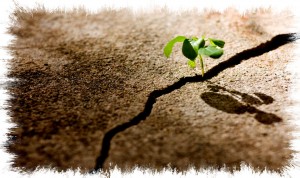
… if anyone becomes proud of his skill and the profit he brings the community, he should be taken from his craft and work at ordinary labor.
Who am I?
As June 2015 approaches and I come to the end of my official curacy, marked by a final assessment panel and an interview with my bishop, I am finding it hard not to think about the reports that will be gathered about me and my suitability to minister. On the bishops desk will be a minimum of 9 reports assessing my progress over the last three years, my competences, my character and every aspect of who I am. It is a pretty daunting thing if you think about it too much!
I have also been undertaking some intense ‘soul searching’ and reflection for the last few months guided by a counsellor. This has helped me to understand a little more as to what makes me behave and think like I do. I am acutely aware of the complexity by which God works through my own free will and psychological and genetic tendencies to reform me. When is something to be named as ‘God-given’ and when is it not?
I find it hard to accept that all talents and skills are to be ascribed to the spiritual realm. There are things that I’m good at which are there because I have worked very hard at learning and perfecting them. When I was an atheist I would get frustrated with religious people saying God gave them that ‘gift’ when it could be taught without involving God at all. I’m not saying that God can’t use those skills that one learns and does courses in but that we shouldn’t ascribe all skills to God for there are some skills which do not honour him nor would he want us to use. Take learning how to torture someone. It may seem facetious to say this but there are some people who are very good at taking other human beings to the edge of their life but holding them on the brink to force them to speak on the desired issue. This is a skill which not everyone can do. We wouldn’t dream of saying,
They’re really good at that it must be a god-given gift.
What is the distinction? Is it in the purpose of the activity? If someone learns a skill without knowing God and uses it to actively deny God is that still God-given? Is everything we are and do because of God? If this is true then why does he change us? In saying that all skills and talents are God-given, to me, denies the wonder and power of God’s redemption.
There are things that I have picked up through my experiences that are not healthy. I respond badly in certain situations which are not edifying and I am not proud of and I wouldn’t dream of turning round to the people I hurt and say,
This is the way God made me so you can’t complain.
It would be nice to say that because it takes all the pressure for me to change off and to blame God for making me ‘this way’. The truth is God didn’t make us ‘this way’. We were made by flesh and blood and we’ve been shaped by an imperfect world filled with imperfect people. Some parts of me are messed up and need reforming and that’s also true of you.
When St. Paul talks about spiritual gifts he is both vague and specific. The lists of gifts are not, in my mind, exhaustive, nor are we meant to be focussing on the list of gifts but rather the point of these passages (1 Corinthians 12, Romans 12 and, some would argue, Ephesians 4 but I have my questions on that!) is to highlight God the giver of grace through his Holy Spirit. God equips us for the tasks he calls us to. In my view and my experience, God never equips us for no reason. God calls first and equips after. This order makes more sense for God wants us to serve and behave dependent on him not on ourselves. Naming and blessing all our capabilities on behalf of God is not the same as truly experiencing the transformation of God via his Spirit.
That’s why, in The Rule of St. Benedict, I think it is clear that the ‘artisan’ is described as having a ‘skill’ and not a ‘gift’. But, you may protest, what about Bezalel!
The Lord spoke to Moses: “See, I have called by name Bezalel son of Uri son of Hur, of the tribe of Judah: and I have filled him with divine spirit, with ability, intelligence, and knowledge in every kind of craft, to devise artistic designs, to work in gold, silver, and bronze, in cutting stones for setting, and in carving wood, in every kind of craft.” (Exodus 31:1-5)
My reading of Exodus 31 is that Bezalel is given ‘skill’ for a specific task. The call comes first the skill second. God helps Bezalel to learn the necessary skills with the other aspects of the gift, ‘wisdom, understanding and knowledge/intelligence’ (from the original Hebrew).
Now, I’m not saying that these skills are not important and can’t be used by God; quite the opposite! It is a testament and a witness to the redemption of God and how God works that he does use those things we learnt before we received his gift of grace. The distinction I am wanting to make is between that which God has given to us and how God uses us. The former is perfect for it comes from God and the latter is imperfect but redeemable if we choose to obey God’s will. Does this distinction need to be made? I would argue it does for we can easily slide into blessing everything we do as ‘God-given’ and controlled by God without considering the important aspect of our own fallenness and brokenness.
When it comes to questions of my identity I struggle to communicate such a concept because of the confusing assumptions of both myself and the hearer. When I sit before the panel assessing my vocation and competences and I talk with my bishop, I will struggle to communicate seemingly simple questions about discernment. This is not about what God is calling me to specifically but about how he has equipped me. What of my personality is God-given? What part of who I am is from God?
What it comes down to is I can only be sure of this: I am in Christ being renewed for his glory all the rest is debatable.
Reflection
The most significant challenge in this chapter of the Rule is the guidance,
…if anyone becomes proud of his skill and the profit he brings the community, he should be taken from his craft and work at ordinary labor.
As I face the panel I will be sensitive to my own pride and, as with most days of my life, pray that God will humble me, that he will remind me of my identity in him and to speak only of that.
We are so keen to establish our self esteem because we all are confused about who we are at the deepest level. We feel we should know ourselves but the truth is we don’t and that’s scary. Thomas Merton suggests,
The reason we hate one another and fear one another is that we secretly or openly hate and fear our own selves. And we hate ourselves because the depths of our being are a chaos of frustration and spiritual misery. Lonely and helpless, we cannot be at peace with others because we are not at peace with ourselves, and we cannot be at peace with ourselves because we are not at peace with God. (Thomas Merton, The Living Bread (London: Burns and Oates, 1976) p.9)
In his extended commentary on identity in ‘New Seeds of Contemplation’ he says,
In great saints you find that perfect humility and perfect integrity coincide. (Thomas Merton, New Seeds of Contemplation (New York: New Directions, 1972) p.99)
Humility, Merton asserts,
…consists in being precisely the person you actually are before God, and since no two people are alike, if you have the humility to be yourself you will not be like anyone else in the whole universe. (ibid.)
For Merton the practical things of everyday life should not be items of conflict,
The saints do not get excited about the things that people eat and drink, wear on their bodies, or hang on the walls of their houses. To make conformity or non conformity with others in these accidents a matter of life and death is to fill your interior life with confusion and noise. (ibid.) (my emphasis)
My personality and my preferences are ‘accidents’ not to be seen as static like some perfect idol but rather to be sacrificed before God to used and changed as he wills. My skills and competences, likewise.
Genes, parenting, and spiritual forces do condition who we are. But for believers whose spirits have been regenerated by the Holy Spirit these conditioning factors cannot determine who we are unless we choose to allow them to do so. (Gregory Boyd, God of the Possible: a biblical introduction to the open view of God (Grand Rapids: Baker Books, 2000) p.147)
In order to know who we are we must know who God is and discover who we are before him.
But under the steady bombardment of meaningless propaganda that is always directed against us, we surrender our privilege to think and hope and make decisions for ourselves… And we will never find God if we are not ourselves mature persons. To find God one must first be free.(Thomas Merton, The Living Bread (London: Burns and Oates, 1976) p.11)
Freedom comes when we follow Christ into his death and live in his resurrection and new creation. Death of our ego, death of our personality, death of everything we think defines us which is not Christ. In uniformly being in Christ we find we are uniquely ourselves.
Abba Father, you call us to life in you through participating in the death and new life of your son Jesus Christ. We humbly approach you and ask that you take every aspect of our life and use it for your glory. We ask you keep our eyes fixed on you and to continue the work of discipleship.
Come, Lord Jesus.
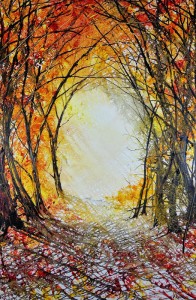

 All artists are seeking that surprise because it is a divine moment; a meeting with a force unnameable, holy. It is un-manufacturable and many have tried to force it only to be left high and dry. The reason it can’t be rushed or made to happen is because if you’re focussing on creating a surprise it will no longer be a surprise.
All artists are seeking that surprise because it is a divine moment; a meeting with a force unnameable, holy. It is un-manufacturable and many have tried to force it only to be left high and dry. The reason it can’t be rushed or made to happen is because if you’re focussing on creating a surprise it will no longer be a surprise.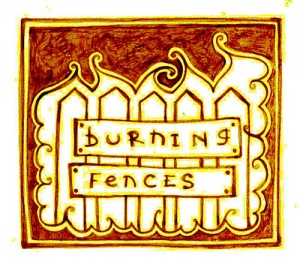 I have had the privilege of being welcomed into a community over the last year which has had an ongoing and deeply transformative impact on me and my vocation as an ordained priest. The community are mainly in their twenties and would, at a cursory glance, be classified as ‘arty’ intellectual types, although this is not entirely true; not that they are not either of those things but that which unites this group isn’t those two general categories. It is only in the last month or so that I have begun to grasp the ‘charism’, the ‘je ne sais qua’, of Burning Fences.
I have had the privilege of being welcomed into a community over the last year which has had an ongoing and deeply transformative impact on me and my vocation as an ordained priest. The community are mainly in their twenties and would, at a cursory glance, be classified as ‘arty’ intellectual types, although this is not entirely true; not that they are not either of those things but that which unites this group isn’t those two general categories. It is only in the last month or so that I have begun to grasp the ‘charism’, the ‘je ne sais qua’, of Burning Fences.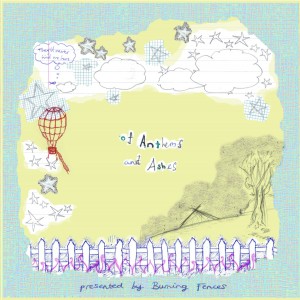 Before I stumbled through the doors one cold December night, this community had been meeting, singing and telling stories for a year or more. They had produced a CD of songs which they had developed entitled ‘Of Anthem and Ashes’. The images that were resonating with them then and remain reverberating through our times together are phoenix like resurrections; songs sung in the rubble, new plants breaking through concrete. These images have always resonated with me and it’s why I know I am a ‘fence burner’.
Before I stumbled through the doors one cold December night, this community had been meeting, singing and telling stories for a year or more. They had produced a CD of songs which they had developed entitled ‘Of Anthem and Ashes’. The images that were resonating with them then and remain reverberating through our times together are phoenix like resurrections; songs sung in the rubble, new plants breaking through concrete. These images have always resonated with me and it’s why I know I am a ‘fence burner’.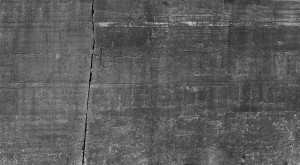 The times when Church is most frustrating, for me, is in the ‘necessary organization’. What irks me is the lack of convincing Biblical precedent. The Temple system failed and yet here we are in the 21st century rebuilding it. I get it, organic is messy and uncontrollable, unpredictable but it’s how the world functions. We human beings are devastating when we control and tinker with the organic creation. We’ve tried to organize the world and what we discover is we’re trapped in boxes which do not fit nor encourage us to flourish in the ways in which we should.
The times when Church is most frustrating, for me, is in the ‘necessary organization’. What irks me is the lack of convincing Biblical precedent. The Temple system failed and yet here we are in the 21st century rebuilding it. I get it, organic is messy and uncontrollable, unpredictable but it’s how the world functions. We human beings are devastating when we control and tinker with the organic creation. We’ve tried to organize the world and what we discover is we’re trapped in boxes which do not fit nor encourage us to flourish in the ways in which we should.